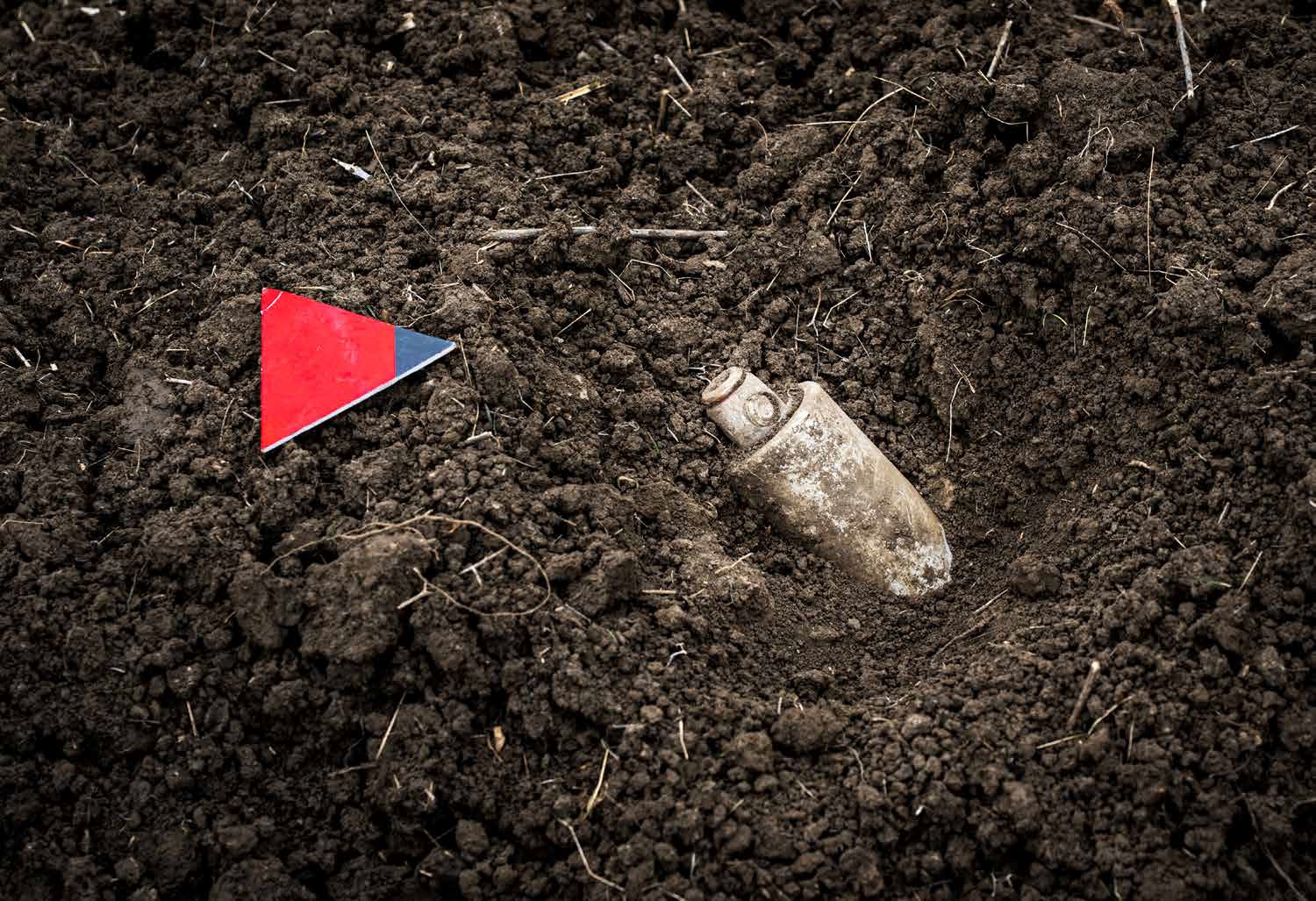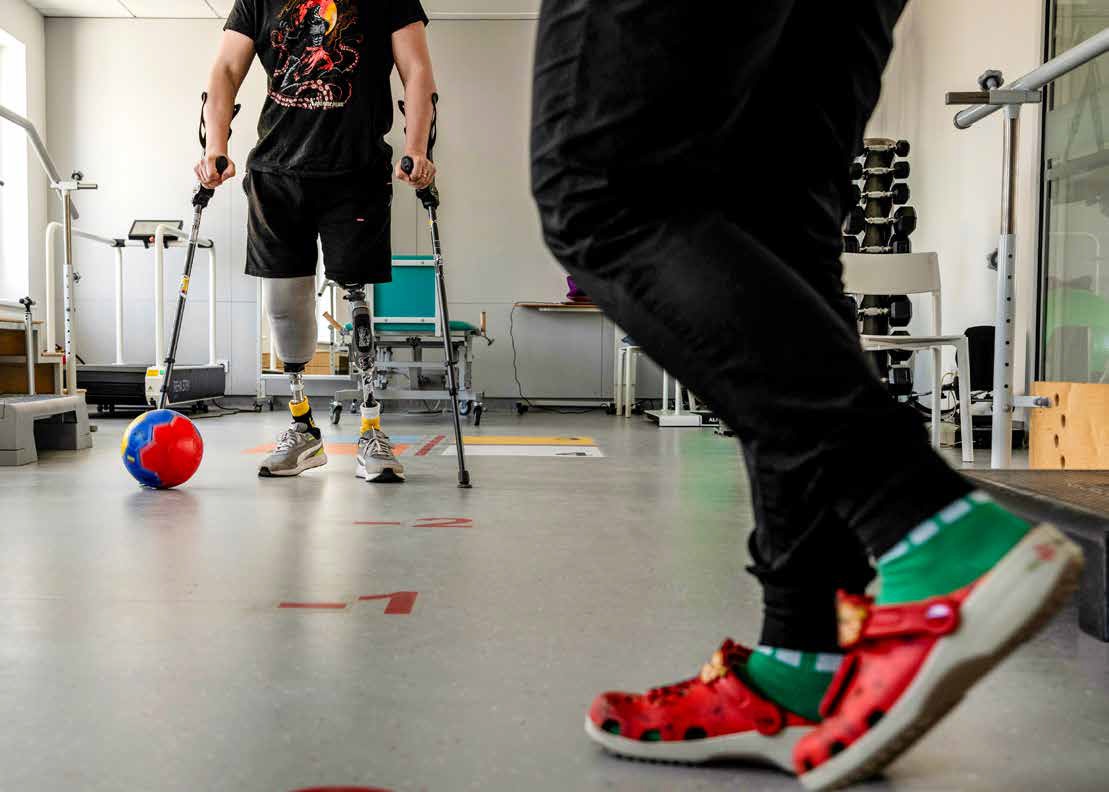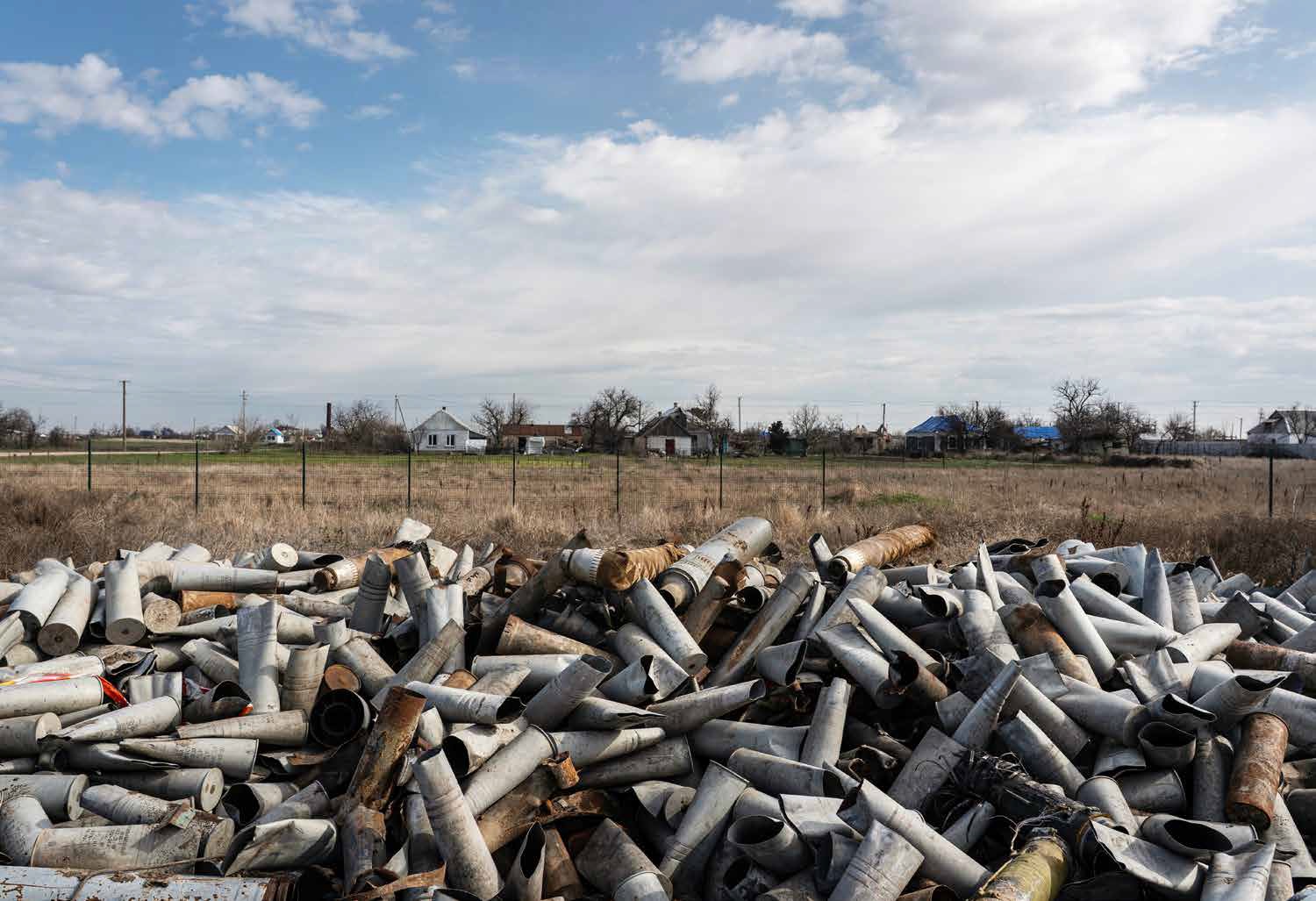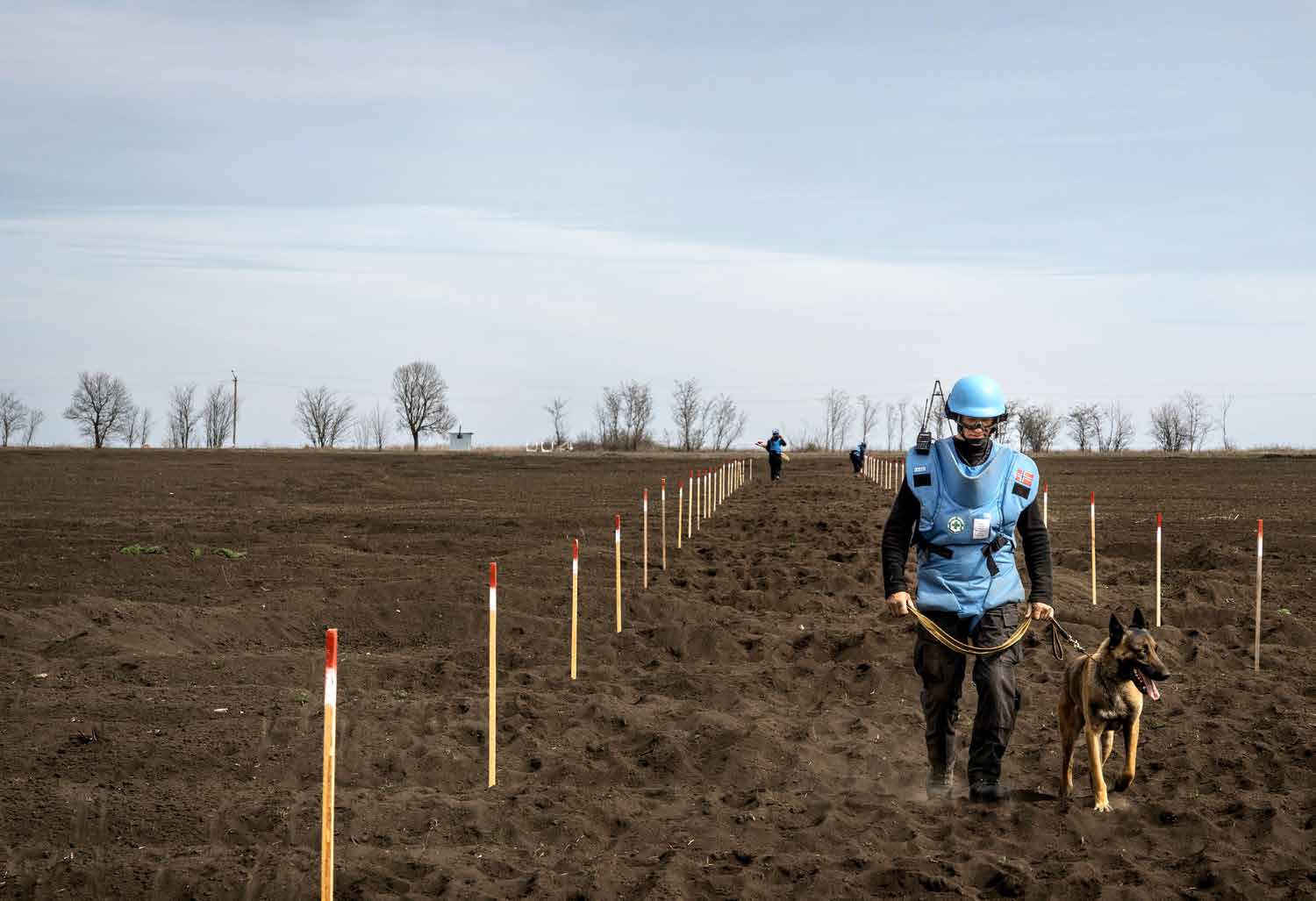Beneath the Surface
Text and photos by Sandro Maddalena
Abridged by Syharn Shen (沈思含)
Beneath the Surface
Text and photos by Sandro Maddalena
Abridged by Syharn Shen (沈思含)

An unexploded munition lies in a Ukrainian field, marked by demining teams during clearance operations. It awaits safe removal by the State Emergency Service, a reminder of the constant danger civilians face in war-torn areas.
In war-torn Ukraine, signs bearing skulls and crossed bones warn of a hidden danger: the countless landmines and unexploded ordnance that litter the countryside, especially in regions that have seen heavy fighting or occupation. These silent killers have been a part of daily life since 2014 in Donbas—and with Russia's full-scale invasion in 2022, the threat has expanded across 138,000 square kilometers, nearly a quarter of Ukraine.
Clearing such a vast area requires immense resources and strict adherence to International Mine Action Standards, a global protocol governing training, detection, and safe removal. Yet the instability of ongoing warfare makes even planning such operations difficult. "Even if we rounded up all the deminers from all over the world and brought them to Ukraine, it would still not be enough," said Ihor Bezkaravainyi, Ukraine's Deputy Economy Minister.
The UN reports that Ukraine now faces the highest level of unexploded ordnance contamination in the world. If the war ended today, it would still take an estimated 30 years to clear the country. But with over 30,000 shells fired daily by both sides—many of them Soviet-era munitions with a 10% to 30% failure rate—the threat only grows.

At a rehabilitation center in Lviv, a Ukrainian soldier undergoes a long recovery after losing both legs in a landmine explosion.
Cluster bomb submunitions, or bomblets, are especially dangerous. Up to 40% fail to detonate, lingering in fields, forests, and even homes. Civilians returning to previously occupied areas have found mines hidden in ovens, toys, and even under corpses. In frontline zones, defensive minefields can contain up to five mines per square meter.
The World Bank estimates the full cost of decontaminating Ukraine at $35 billion. Efforts are underway, especially in the regions of Kharkiv, Kherson, and Mykolaiv, where Russian forces occupied territory for six to nine months. Mykolaiv, farther from the front, has become a focus for demining due to better access and lower immediate risks.
In spring, demining operations ramped up to prepare farmland for sowing. Yet in places like Snihurivka, already devastated by mines during Russian occupation, new threats emerged after the Kakhovka dam's destruction caused widespread flooding.

One of three major storage sites in Mykolaiv for spent and damaged munitions, this site holds the collected remnants of spent and damaged munitions.
Daria Sheremet, from the nearby village of Pavlo Maryanivka, lost her brother to a mine and her family farm to both war and water. Now, she works with the Ukrainian Demining Service to clear farmland around Snihurivka—a task essential to the country's economy.
Still, many smaller villages remain sidelined. In Yevhenivka, Russian forces scattered PFM-1 mines before retreating in October 2022. These gliding anti-personnel devices have maimed or killed multiple residents, including brothers Oleksandr and Igor. Today, large parts of the village remain too dangerous to enter.
In settlements like Partizanske, where destruction was severe, returning residents have begun clearing war debris themselves. Meanwhile, international support continues. In Kyselivka, Norwegian People Aid uses explosives-detecting dogs and remote-controlled machines to clear farmland up to 75 times faster than manual methods.
Despite the ongoing war, these efforts reflect a profound hope: that one day, Ukrainians will walk their land again—without fear.

In Mykolaiv, a Norwegian People Aid demining dog team works in the fields. With the help of trained dogs, the clearance process is up to 75 times faster than traditional methods.
Contact Us | Plan a Visit | Donate
8 Lide Road, Beitou 11259, Taipei, Taiwan
886-2-2898-9999
005741@daaitv.com
©Tzu Chi Culture and Communication Foundation
All rights reserved.
